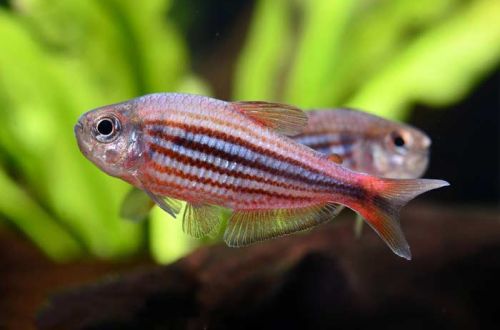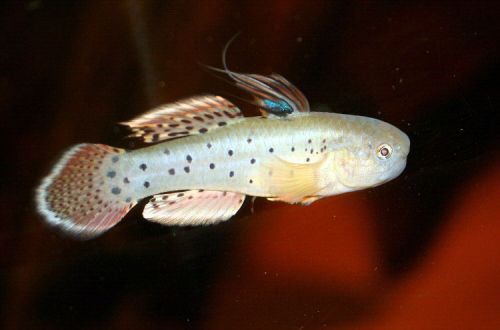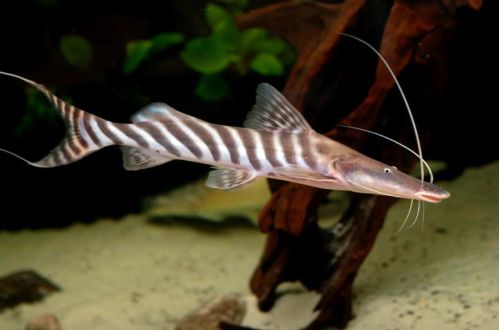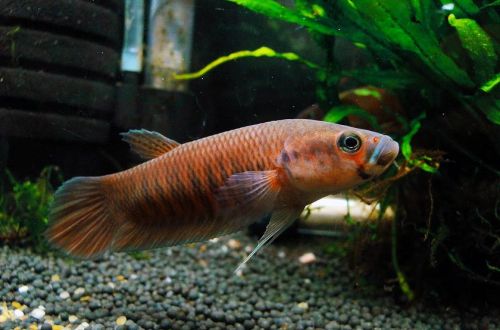
Moencausia agnesa
Moenkhausia agnesa, scientific name Moenkhausia agnesae, belongs to the family Characidae (Characinidae). The fish is native to South America. Inhabits the upper reaches of the Amazon. The aquariums are usually imported from Peru.

Description
Adults reach a length of about 7 cm. The head is large with large eyes. The back is slightly hunched in the area of the fin. The color is light with pinkish hues. Rows of horizontal stripes run along the body. They are black at the bottom and reddish at the top. It is noted that males look more colorful than females.
Behavior and Compatibility
Mobile schooling fish. It is recommended to purchase a group of 5-6 individuals. Compatible with many types of fish, such as Tetras, small South American cichlids, peaceful cyprinids (Barbs, Danios), etc.
Brief information:
- The volume of the aquarium – from 80 liters.
- Temperature – 24-29°C
- Value pH — 5.5–7.0
- Water hardness – 5–10 dGH
- Substrate type – any
- Lighting – moderate
- Brackish water – no
- Water movement is weak
- The size of the fish is about 7 cm.
- Food – any food
- Temperament – peaceful active fish
- Keeping in a flock of 6-8 individuals
Maintenance and care, arrangement of the aquarium
The optimal size of the aquarium for a small flock of Moenkausia agnes starts at 100 liters. The decoration uses a large number of aquatic plants, while maintaining open areas for swimming. Any soil, preferably dark, thanks to which the color of the fish looks more contrasting.
Water parameters should have low pH and dH values, and the temperature should not fall below 25°C. A good choice would be to use natural driftwood and dried leaves of some trees, which will become a source of tannins. Such conditions will resemble the natural habitat of this species.
Aquarium maintenance is standard and consists of the following minimum set of procedures: weekly replacement of part of the water with fresh water, removal of organic waste (food leftovers, excrement), equipment maintenance.
Food
Will accept most popular foods of suitable size in dry, frozen and live form.





